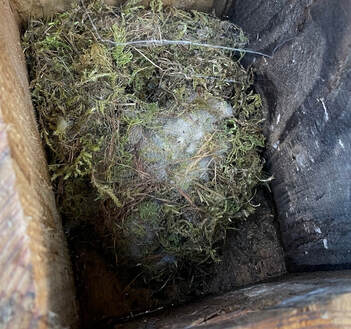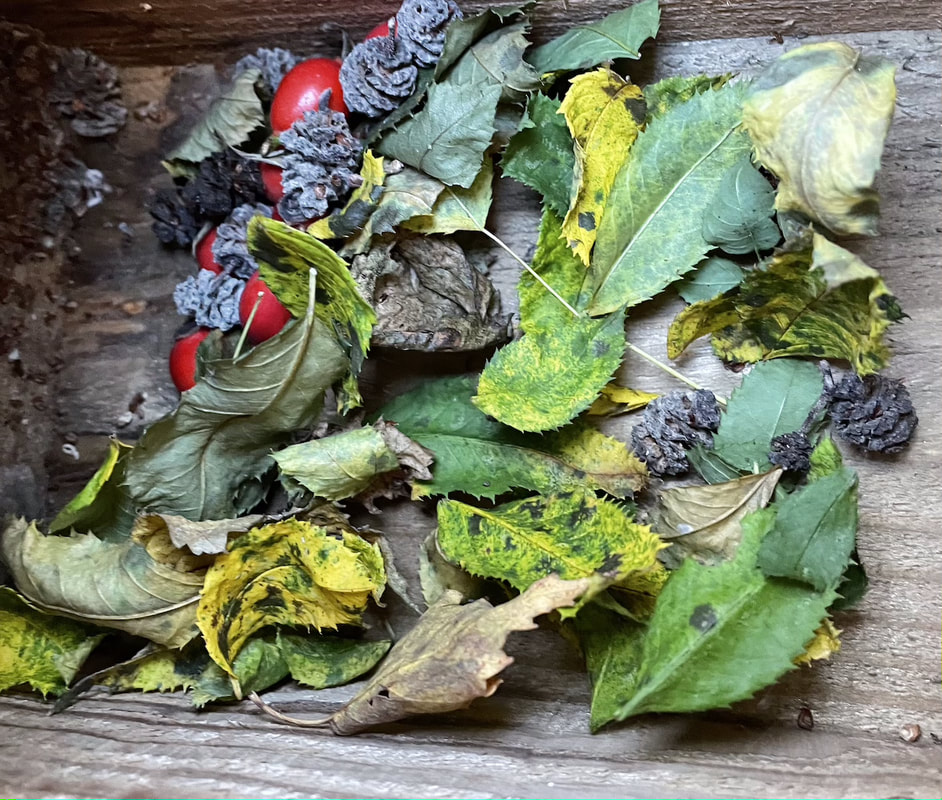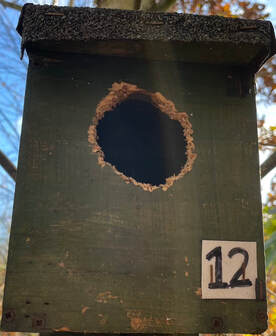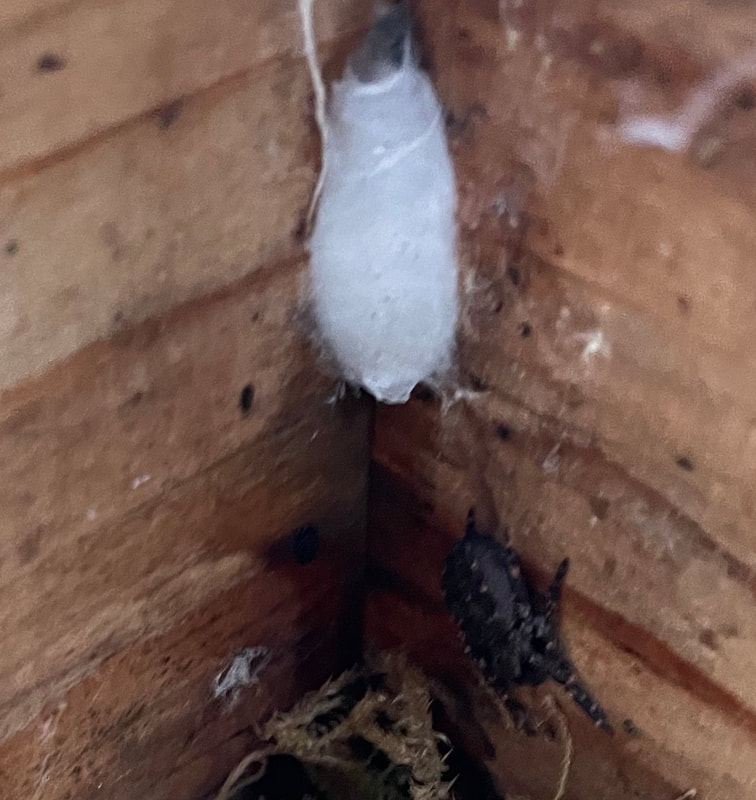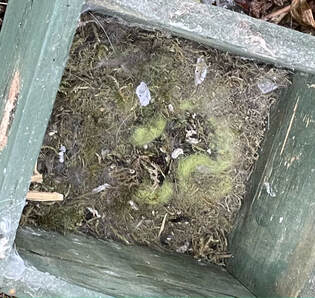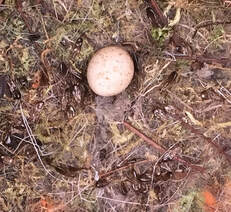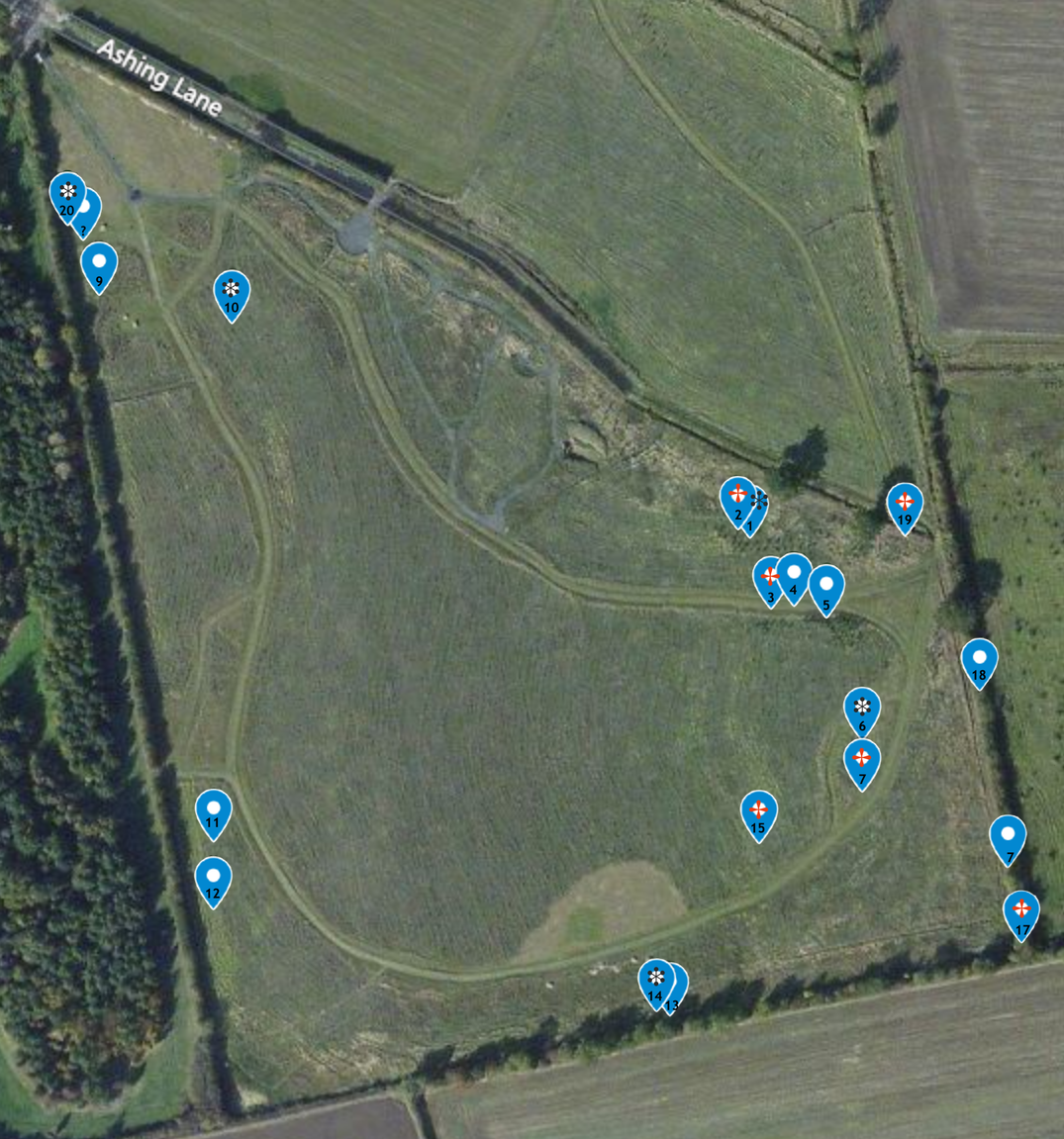|
I put up four additional boxes in the spring, made by our neighbour Bill. These are lovely, solid wood and neatly made, as you'd expect from a builder. Three are tit boxes, one is open fronted, supposed to be suitable for robins or blackbirds. They are ranged round the south side of the picnic glade. This winter, I have had help from two Duke Of Edinburgh Award candidates, doing their volunteering with Nettleham Woodland Trust. They were happy to get up the ladder and bring the boxes down then record the contents.
0 Comments
I have now completed all the checks of boxes ready for the spring and put three boxes back up that had been languishing in the grass. One of these (box 8) had been missing since autumn 2016 so I was pleased to find it and put it back up. It looked like it had been used by mice and strangely, there were rabbit pellets on top of it. Do rabbits usually do that?
Box 16, which lives in the hedge between Monks and Cooperative Woods, had dropped down to the ground. It had one small white egg inside, very cold and clearly left over from last year. I hope the best of the brood (if there was one) was more successful. I've already seen our garden birds flirting and displaying territorial behaviour, so hopefully it won't be long before there are new occupants in the boxes. I am slowly getting through the winter checks and repairs on the bird boxes.
Of the 14 checked so far, only one was empty, all the others had plenty of evidence of occupation. No mice so far! Same box as last year, numbered 13 - unlucky perhaps. It's in the hedge between the woodland and a field, high in a mature tree. Time for a new location, I think. Box eight, missing for ages, showed up in amongst the trees, I just happened to be helping install a new bench and spotted it on the ground. It came home to dry out and be checked for any repairs required. Box 11 has now disappeared, I'll need to have a good rummage about to see if I can find it before the undergrowth starts up again. Amongst the nesting material, I only found one desiccated body, looks like a tree sparrow from the feathers on the head, it was in box 7, in the alders near the entrance to Cooperative Wood. Generally, the lorry inner tube bands holding the boxes to the trees have worn well enough, although most need replacing after one year. The material does not seem to have had any impact on the trees, but has perished, probably through exposure to the elements. On a quick visit to Cooperative Wood to coppice some willow, I passed box 4 and a great tit popped out - a definite sighting for that box.
Today's visit to the nest boxes was to establish definite sightings of birds in and out of the boxes.
There are great tits in boxes 11 and 18. 11 is in an oak tree, close to the hedge adjoining Watts Wood and 18 is in an ash tree in the hedge between South Wood and Lincolnshire Cooperative Wood. Both are just coming in to leaf. A tree sparrow flew out of box 20, which is in a birch tree close the hedge adjoining Watts Wood. Is this a pattern? A blue tit exited the box above the Threshold and one returned there as we were leaving the wood. This box is quite exposed and faces more or less south south east, so it must get pretty hot in there when the sun is out! Despite seeing boxes packed with vegetation, these were the only occupants we spotted today. Maybe there are birds on eggs inside some other boxes we can't tell yet, so more visits as the season progresses. Today's visit to Monks Wood to check the boxes was made in the mid morning with my Chinese friend Polly, who I wanted to introduce to nest box watching. The weather was overcast with a brisk breeze, predominantly northerly. We both had binoculars so we could observe any activity from a polite distance, trying not to disturb any potential residents. The map below is annotated with box numbers and symbols - ❉ = bird seen, ✢ = nest material seen. Box 20 again showed immediate activity on arrival, but this time the bird that was in and out with nesting materials was a tree sparrow. A great tit shot out of box 10 as we approached, clearly plenty of nesting materials inside. Box 14 seems to have a resident, but it was too quick for confident identification, could have been a house sparrow. We disturbed great tits out of boxes 1 and 6. Of the other boxes, six showed clear evidence of nesting material inside, 16, 17, 19, 3, 2 and 7. That leaves 8 boxes that show no evidence of occupation - yet!!! Some of those are in ash trees that are only just starting to come into leaf, so there is little cover around them. As we approached the Threshold on our way back to the car, we saw a blue tit shoot left towards the hedge, away from the threshold roof, so we backed up and waited and were rewarded by a pair of blue tits that were in and out of the box that is high on the Monks Wood side of the threshold. We watched them for a few minutes, coming and going, so perhaps they have selected that box this year. If you would like to find the boxes and send me sightings, please use the Google map to locate them. Click here goo.gl/DrwKES to access the map. Don't get too close and disturb the residents, please! In sunshine but with a brisk, cool wind, I checked the progress of the boxes. As soon as I got through the threshold, I could see movement around box 20 and the binoculars let me see a pair of blue tits in and out. When I got closer, I could see that there was plenty of nesting material in the box.
As I went around Monks Wood, I tried to see in through the holes, looking for any signs of activity. I was rewarded - boxes 1, 2, 3, 5, 10, 16 and 19 all had visible nesting material inside. So that's eight out of nineteen that may be occupied (box eight has disappeared without trace!) The bird boxes have been checked, emptied of all mice and detritus ready for the new breeding season. The fixings have also been changed to strips of old lorry inner tube, which will hopefully stretch to accommodate tree growth.
A check of the boxes on 31 March only gleaned evidence of one pair of potential residents so far - blue tits investigating box 20! My husband and I were in China during the nesting season in 2016, but when we came home in the Autumn we surveyed the boxes to see what had been happening. The SSPP boxes showed plenty of evidence of use, and some current residents! There have been reports of chick sounds from some boxes which is very encouraging. Next spring, a more careful watch will be kept to try to identify the species in residence. |
